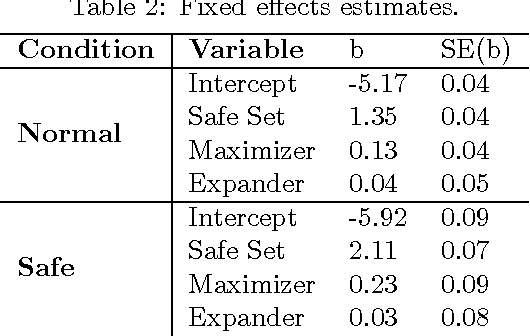Dominik R. Bach
Skeleton Motion Words for Unsupervised Skeleton-Based Temporal Action Segmentation
Aug 06, 2025



Abstract:Current state-of-the-art methods for skeleton-based temporal action segmentation are predominantly supervised and require annotated data, which is expensive to collect. In contrast, existing unsupervised temporal action segmentation methods have focused primarily on video data, while skeleton sequences remain underexplored, despite their relevance to real-world applications, robustness, and privacy-preserving nature. In this paper, we propose a novel approach for unsupervised skeleton-based temporal action segmentation. Our method utilizes a sequence-to-sequence temporal autoencoder that keeps the information of the different joints disentangled in the embedding space. Latent skeleton sequences are then divided into non-overlapping patches and quantized to obtain distinctive skeleton motion words, driving the discovery of semantically meaningful action clusters. We thoroughly evaluate the proposed approach on three widely used skeleton-based datasets, namely HuGaDB, LARa, and BABEL. The results demonstrate that our model outperforms the current state-of-the-art unsupervised temporal action segmentation methods. Code is available at https://github.com/bachlab/SMQ .
Better safe than sorry: Risky function exploitation through safe optimization
May 14, 2016



Abstract:Exploration-exploitation of functions, that is learning and optimizing a mapping between inputs and expected outputs, is ubiquitous to many real world situations. These situations sometimes require us to avoid certain outcomes at all cost, for example because they are poisonous, harmful, or otherwise dangerous. We test participants' behavior in scenarios in which they have to find the optimum of a function while at the same time avoid outputs below a certain threshold. In two experiments, we find that Safe-Optimization, a Gaussian Process-based exploration-exploitation algorithm, describes participants' behavior well and that participants seem to care firstly whether a point is safe and then try to pick the optimal point from all such safe points. This means that their trade-off between exploration and exploitation can be seen as an intelligent, approximate, and homeostasis-driven strategy.
 Add to Chrome
Add to Chrome Add to Firefox
Add to Firefox Add to Edge
Add to Edge